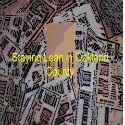Have you ever attempted “couponing”, that is using coupons and then felt like it is not worth your time? You clipped only the coupons you needed, half of the time forgot them when you went to the store, and when you did remember them felt that the money saved was not worth the time and effort? Well I attempted to use coupons twice with those same results and then I was offered a few online coupon classes. I’ve also done a lot of research online and attended other coupon classes and I feel like I have some of the basics now down.
The first thing you need to know is that the way to save with coupons is to match the coupon up with a true store sale and if possible rebates and other offers to maximize your savings.
If you do this you should be able to see savings of 50% or more on a regular basis. In addition when you see a product at its “rock bottom” price that is the lowest price it is available you want to “stockpile” or buy an additional amount. You want to buy as much as you can if it is a non-perishable item because your goal is to have enough to take you through to the next time the item is at its rock bottom price. Implementing this strategy will push you over into the 60-75% range of saving on your groceries every week.
But really it is just that simple and those are the basics. Use a coupon only when a product is at its lowest sales price and stockpile.
Now to get those savings and implement those simple tasks you will have to change some habits. If you currently shop at the same store that is closest to your house you may have to shop at 2 or 3 stores some of which you are not familiar with. Since you want to buy what is truly on sale your store may not have that item on sale. You need to also try to give up your brand loyalties and try new products. Even if there are sales at your store it may not be exactly what you want. For example once in a while you may have to go with Diet Coke instead of Diet Pepsi one week.
So how do you find the rock bottom price? By keeping a price book. A price book is basically a record of the best price you have paid for all the different grocery items you’ve purchased in the past. It’s your history of what a good price is on each individual product and gives you an advantage to know what a good price truly is. To start one take a look at your last grocery receipt and write down what you paid for each item. It can be in a notebook or on an excel spreadsheet. You need to mark down the date and the store purchased at as well. Also you will need a unit price to compare certain things e.g. price per ounce for beverages, price per lb. for meat etc.
Your goal on each shopping trip is then to buy the item for less than you paid the previous time. Eventually after six months or so you will know what the rock bottom price is.
As a general rule a good price to buy is when the product is 30%-50% off and you have a coupon for it. Not every yellow sign you see up is a true sale. You want to only buy when there are true sales.
Of course you don’t want to have to use a calculator for every item to see if it is a true sale but if you look closely the tag tells you your savings. Here are some examples of “false” sale:
Looking at the picture above without even calculating you can tell this is not a true sale you are not saving 30-50%. They have the audacity to calculate it for you and brag that you are saving a whole $.19! I can tell you I have seen this particular product go on sale for $2.80 which is better close to 39%. Add to that a $1 off purchase of 1 item and you have good savings of 60% is even better. If you were to use the coupon on this day you would’ve only saved 22% less than if you bought on a true sales day without a coupon. Here is a true sale:
The tag is covered but all Smithfield products are regular priced $4.19 and this day they are on sale for $2.50 saving you 40%. Add to that $.55 off coupon and you get a good price.
There are also monthly and seasonal sales cycles to consider. If you want frozen pizza or Spaghetti in the summer you will be paying more. If you want Watermelon, blueberries or other summer fruit in February you will end up paying more. For more information check out this article: Grocery Coupon Guide - Seasonal Sales.
There are also monthly sales and promotions that happen annually. Check out some of those in the article Grocery Coupon Guide - Guide to Sales Cycles for Rock Bottom Prices.
This week’s tasks: Try to buy only things that are on sale. Pay attention to “sales tags.” To practice breaking your brand loyalty, try buying some generic or store brand items if there is something you need that is not on sale.
Lastly pick up a Sunday paper in preparation for starting to use coupons in the future.
Next Week's Lesson: Gathering Coupons
If you are a blogger feel free to link up your Couponing Basics Guide, Articles, Top 10 lists etc. in the linky below.
Subscribe to:
Post Comments (Atom)































Thanks for the linky!
ReplyDeleteNo problem!
ReplyDelete